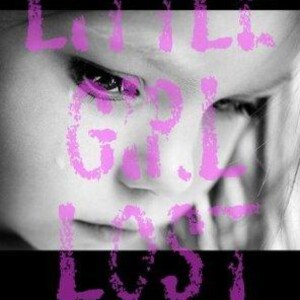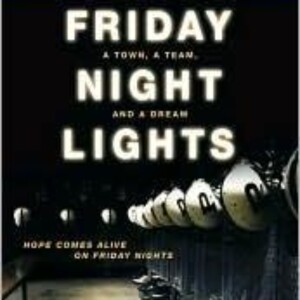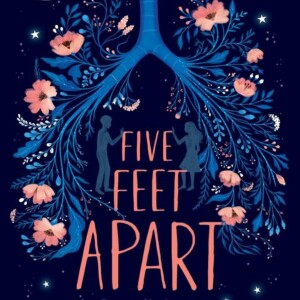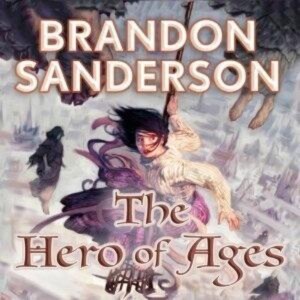Episodes

58 minutes ago
58 minutes ago
1 What's Salvage the Bones
"Salvage the Bones" by Jesmyn Ward explores the themes of family, resilience, and survival in the face of hardship, set against the backdrop of Hurricane Katrina. The novel follows a poor African American family in rural Mississippi, particularly focusing on 15-year-old Esch, who navigates adolescence, love, and loss while grappling with the impending storm. The narrative highlights the struggles of poverty, the bonds of family, and the strength found in community, as the characters confront both personal and environmental challenges. Through vivid storytelling and rich imagery, Ward illustrates the emotional and physical landscapes that shape their lives and the deep connections that help them endure.
2 Key Concepts of Salvage the Bones
In "Salvage the Bones," the theme of survival amidst adversity, introduced in Chapter 1, resonates throughout the entire novel, particularly in Chapters 2, 4, and 7. In Chapter 2, the realities of life in a rural Mississippi community are explored as the Batiste family grapples with poverty and the impending threat of Hurricane Katrina. Chapter 4 further emphasizes the family's struggle for resilience as they confront the challenges of both nature and their personal circumstances. By Chapter 7, the narrative culminates in a powerful depiction of how the characters must unify and utilize their limited resources to confront the storm, showcasing their determination to survive against overwhelming odds. Each of these chapters reinforces the central theme of enduring hardship while clinging to hope and family.
3 In-Depth Chapter Analysis of Salvage the Bones by Jesmyn Ward
In "Salvage the Bones," Jesmyn Ward intricately weaves the theme of survival amid adversity through the narrative structure of the chapters, which unfold over a twelve-day period leading up to Hurricane Katrina. In the early chapters, such as the second chapter, the protagonist, Esch, grapples with her complex family dynamics and her deepening awareness of her own adolescent body, particularly through her interactions with her brothers and her reflections on pregnancy. This chapter highlights the theme of motherhood and the continuous cycle of life amidst hardship, emphasizing the resilience required to navigate both family struggles and the impending natural disaster. The palpable tension of the approaching hurricane foreshadows the challenges the family will face, serving as a metaphor for their internal and external conflicts.
As the narrative progresses to later chapters, particularly during and after the hurricane’s landfall, the theme of loss becomes increasingly prominent. In the climactic moments when the storm devastates their home, the family’s desperate fight for survival encapsulates the fragility of their existence. Chapters like the one detailing their attempt to rescue the family dog, China, mirror the deeper connections between survival, sacrifice, and love within the family unit. These instances reflect how their relationships are tested by external pressures but ultimately reveal the depth of their bonds. By the final chapters, the raw emotional landscape showcases how resilience manifests not only in the will to survive but also in the capacity to grieve and rebuild, framing the narrative’s exploration of the human spirit against overwhelming odds.
Book Summary Audio Bookey https://www.bookey.app/audiobook/salvage-the-bonesQuotes https://www.bookey.app/book/salvage-the-bones/quoteYoutube https://www.youtube.com/watch?v=307ftoh6JAMAmazon https://www.amazon.com/Salvage-Bones-Novel-Jesmyn-Ward/dp/1608196267Goodreads https://www.goodreads.com/book/show/10846336-salvage-the-bones

23 hours ago
23 hours ago
1 What's Hopeless
"Hopeless" by Colleen Hoover explores themes of love, trauma, and the journey toward healing. The story follows Sky, a teenager who has led a sheltered life but begins to uncover painful secrets from her past after meeting Dean, a mysterious boy who challenges her perceptions. As their relationship deepens, Sky confronts her history, grappling with issues of trust, identity, and the impact of family dynamics. The novel delves into the complexities of emotional scars and the transformative power of love and acceptance.
2 Key Concepts of Hopeless
In Colleen Hoover's "Hopeless," Chapter 1 introduces themes of trauma and emotional turmoil, particularly through the protagonist Sky's experiences. Subsequent chapters, such as Chapter 4, delve deeper into these themes as Sky confronts her past and the impacts of her upbringing on her relationships. Additionally, Chapter 9 explores Sky's struggle with trust and vulnerability, highlighting the ongoing effects of her trauma. These chapters collectively reflect the journey of healing and self-discovery initiated in Chapter 1, showcasing how past experiences shape the characters' present lives.
3 In-Depth Chapter Analysis of Hopeless by Colleen Hoover
In "Hopeless" by Colleen Hoover, the chapters intricately weave together themes of trauma, love, and self-discovery, primarily through the journey of the protagonist, Sky. For instance, early chapters introduce her struggle with the traumatic memories that shape her identity and perspectives about love, especially in the context of her relationship with Dean. The intense bond they share illuminates the theme of healing through connection, as Sky begins to confront her past and realize that love can be a source of strength rather than vulnerability.
As the narrative progresses, pivotal chapters reveal shocking truths about Sky's childhood and family dynamics, anchoring the theme of confronting one’s truth. For example, the revelation of her past not only provides a catalyst for her growth but also underscores the importance of facing hidden realities in order to forge meaningful relationships. Hoover effectively illustrates how the journey of self-acceptance and understanding one’s history can lead to a profound transformation, culminating in a love that is both tender and resilient, tying the narrative threads back to the central themes of healing and redemption.
Book Summary Audio Bookey https://www.bookey.app/audiobook/hopeless
Quotes https://www.bookey.app/book/hopeless/quote
Youtube https://www.youtube.com/watch?v=wkakEi9msWE
Amazon https://www.amazon.com/Hopeless-Colleen-Hoover/dp/147674355X
Goodreads https://www.goodreads.com/book/show/62967897-hopeless

5 days ago
5 days ago
1 What's Little Girl Lost
"Little Girl Lost" is an autobiographical account by actress Drew Barrymore that explores her tumultuous childhood and early career in Hollywood. The theme centers on the challenges of growing up in the spotlight, dealing with family dysfunction, and confronting personal demons, including substance abuse and the pressures of fame. Through candid anecdotes, Barrymore reflects on her struggles with self-identity, the consequences of her rebellious behavior, and her journey to recovery and empowerment, ultimately conveying a message of hope and resilience in overcoming adversity.
2 Key Concepts of Little Girl Lost
In "Little Girl Lost," the theme introduced in Chapter 1 revolves around the struggles of childhood innocence and the harsh realities of growing up. This theme resonates throughout several chapters, particularly in Chapter 3, where the protagonist faces challenges that threaten her sense of safety and security. Additionally, Chapter 5 explores the impact of external influences on her development, further emphasizing the tension between innocence and the complexities of life. Together, these chapters deepen the exploration of how the protagonist navigates her journey from innocence into a more complicated world.
3 In-Depth Chapter Analysis of Little Girl Lost by Drew Barrymore
In "Little Girl Lost," Drew Barrymore recounts her tumultuous childhood and rise to fame, with a keen focus on the themes of identity, resilience, and the quest for belonging. In Chapter 2, Barrymore vividly describes her early experiences in the Hollywood limelight, emphasizing the conflict between her public persona and her private struggles. Her feelings of isolation amidst the chaos of stardom highlight the theme of identity, as she grappled with being labeled a child star while yearning for genuine connection. For instance, she recounts how fame brought her not friends, but rather a sense of alienation, thus illustrating the complexities of growing up in the spotlight.
As the narrative progresses to Chapter 7, Barrymore delves into her battle with addiction, further bolstering the theme of resilience. Here, she candidly shares moments of vulnerability and desperation, such as her experiences in rehab and the painful realizations of her self-destructive behavior. This chapter serves as a turning point, where her acknowledgment of her struggles showcases her strength and determination to reclaim her life. Her journey encapsulates the transformative power of confronting one's demons and the pursuit of self-acceptance, reinforcing Barrymore's ultimate message about the importance of resilience in the face of adversity. Through these chapters, Barrymore weaves a narrative that is at once personal and universal, inviting readers to reflect on their own paths to self-discovery.
Book Summary Audio Bookey https://www.bookey.app/audiobook/little-girl-lost
Quotes https://www.bookey.app/quote-book/little-girl-lost
Youtube https://www.youtube.com/watch?v=2gMSRBHhSys
Amazon https://www.amazon.com/Little-Girl-Lost-Drew-Barrymore/dp/0671689231
Goodreads https://www.goodreads.com/book/show/58658.Little_Girl_Lost

6 days ago
6 days ago
1 What's Friday Night Lights
"Friday Night Lights" by H.G. Bissinger explores the intense cultural significance of high school football in the small Texas town of Odessa, focusing on the 1988 season of the Permian High School Panthers. The book delves into the societal pressures, community pride, and personal sacrifices tied to the team's pursuit of a state championship. Bissinger examines how the sport shapes the identities and futures of the athletes, reflecting broader themes of ambition, obsession, and the American Dream. Through vivid storytelling and in-depth character studies, the narrative reveals the complexities of life in Odessa, where the lines between sport and life become increasingly blurred.
2 Key Concepts of Friday Night Lights
In "Friday Night Lights," the theme of community and the impact of football on identity, which is introduced in Chapter 1, resonates throughout several subsequent chapters. For example, Chapter 3 delves into the town of Odessa's societal dynamics and how football serves as a unifying force, shaping the community's values and priorities. Similarly, Chapter 5 explores the personal struggles of the players, highlighting how their involvement in football intersects with their identities and aspirations, further reinforcing the theme of the sport as a defining element of community life. Overall, these chapters collectively illustrate the profound connection between the town's identity and the high school football culture.
3 In-Depth Chapter Analysis of Friday Night Lights by H.G. Bissinger
In "Friday Night Lights," H.G. Bissinger explores themes of community, identity, and the pressures of high school athletics through the experiences of the Permian Panthers football team in Odessa, Texas. In Chapter 1, titled "The Last Game," Bissinger introduces the intense atmosphere surrounding high school football in a small town, illustrating how the sport becomes a focal point for community identity. The chapter details the overwhelming expectations placed on the young athletes, particularly quarterback Mike Winchell, as they are celebrated as local heroes. This sets the stage for the recurring theme of how football shapes the boys' identities and the community's values, putting immense pressure on them to succeed.
In Chapter 5, "The Uniform," Bissinger delves deeper into the symbolism of the football uniform, which represents not only team identity but also communal pride and individual aspirations. As the players don their uniforms, they are imbued with a sense of importance and purpose, embodying the hopes and dreams of Odessa. Bissinger highlights the contrast between the glamorous perception of football and the harsh realities faced by the players, such as injuries and personal struggles. This chapter emphasizes the theme of the pursuit of glory, as players grapple with the burden of expectations while navigating their adolescent challenges, revealing the complex relationship between sports, identity, and community in their lives.
Book Summary Audio Bookey https://www.bookey.app/audiobook/friday-night-lights
Quotes https://www.bookey.app/book/friday-night-lights/quote
Youtube https://www.youtube.com/watch?v=JsxfzvN0tdI
Amazon https://www.amazon.com/Friday-Night-Lights-Town-Dream/dp/0060974060
Goodreads https://www.goodreads.com/book/show/85431.Friday_Night_Lights

7 days ago
7 days ago
1 What's How to Stay in Love
In "How to Stay in Love," James J. Sexton delves into the complexities of maintaining lasting relationships, drawing on his experiences as a divorce attorney. The book emphasizes the significance of communication, commitment, and personal responsibility in nurturing love over time. Sexton offers practical advice and insights into common pitfalls couples face, urging them to prioritize connection and understanding amidst challenges. Ultimately, the work advocates for a proactive approach to love, encouraging readers to actively cultivate their relationships rather than take them for granted.
2 Key Concepts of How to Stay in Love
In "How to Stay in Love," Chapter 1 introduces the theme of nurturing a lasting relationship through intentionality and communication. Subsequent chapters, such as Chapter 3, which focuses on the importance of quality time, and Chapter 5, which emphasizes open dialogue, directly relate to this theme by providing actionable insights on how to strengthen and maintain emotional connections. These chapters build on the foundational ideas presented in Chapter 1, illustrating practical ways couples can actively engage in sustaining their love over time.
3 In-Depth Chapter Analysis of How to Stay in Love by James J. Sexton
In "How to Stay in Love" by James J. Sexton, the chapters are intricately woven to explore the complexities of love and the vital role of commitment in sustaining relationships. One notable chapter focuses on the concept of "Expectations," where Sexton emphasizes the importance of aligning personal goals and relationship ideals between partners. He illustrates this by recounting real-life anecdotes that highlight misunderstandings stemming from differing expectations, showcasing how clear communication can fortify a couple's bond.
Another significant chapter delves into the theme of "Forgiveness." Sexton discusses how harboring resentment can erode love over time, and he provides practical strategies for couples to navigate conflicts healthily. By sharing stories of couples who successfully navigated challenges through forgiveness, he reinforces the idea that love requires an ongoing effort to empathize and let go of past grievances. Overall, Sexton ties these themes together by advocating for active engagement and conscious choices, ultimately underscoring that love is not merely a feeling but a continuous commitment to understanding, support, and growth within the relationship.
Book Summary Audio Bookey https://www.bookey.app/audiobook/how-to-stay-in-love
Youtube https://www.youtube.com/watch?v=2x7UIoOgjjE
Amazon https://www.amazon.com/How-Stay-Love-Divorce-Together-ebook/dp/B075QJ7JLB
Goodreads https://www.goodreads.com/book/show/45892364-if-you-re-in-my-office-it-s-already-too-late

Tuesday Jul 08, 2025
Tuesday Jul 08, 2025
1 What's Fast Like a Girl
"Fast Like a Girl" by Mindy Pelz explores the benefits of intermittent fasting, particularly for women, emphasizing its potential to enhance physical and mental health. The book combines personal anecdotes, scientific evidence, and practical guidance to advocate for fasting as a tool for weight management, energy improvement, and hormonal balance. Pelz addresses common misconceptions and challenges around fasting, aiming to empower women to take control of their health through a structured approach to fasting that aligns with their unique physiological needs.
2 Key Concepts of Fast Like a Girl
In "Fast Like a Girl" by Dr. Mindy Pelz, Chapter 1 introduces the theme of embracing fasting and its benefits for women's health. This theme is further explored in subsequent chapters, particularly in Chapter 3, where various fasting methods are discussed, highlighting how they can be tailored to fit women's unique physiological needs. Additionally, Chapter 5 delves into the emotional and psychological aspects of fasting, reinforcing the importance of a holistic approach. By connecting these chapters back to the initial theme, the book emphasizes the power of fasting as a transformative tool for well-being, specifically for women.
3 In-Depth Chapter Analysis of Fast Like a Girl by Mindy Pelz
In "Fast Like a Girl," Mindy Pelz explores the intricacies of fasting and its profound impact on physical, mental, and spiritual well-being. One of the early chapters emphasizes the physiological benefits of fasting, highlighting how it can enhance metabolic health and clarity of mind. For example, Pelz discusses the role of fasting in promoting autophagy, a process where the body cleans out damaged cells, ultimately leading to improved health outcomes. This chapter serves to establish a foundational understanding of fasting, connecting it to the broader theme of empowerment through bodily awareness and self-care.
As the book progresses, Pelz delves into the psychological aspects of fasting, particularly in the chapter that addresses the importance of mindset and intention. She illustrates how fasting can serve as a powerful tool for discipline and personal growth, encouraging readers to view it not just as a dietary practice but as a pathway to mental resilience. Specific anecdotes and testimonials from those who have integrated fasting into their lifestyles further reinforce this theme of transformative empowerment. This chapter underscores the interconnectedness of body and mind, illustrating that fasting is not merely about abstaining from food but about reclaiming control over one’s life, highlighting the holistic benefits that accompany the practice.
Book Summary Audio Bookey https://www.bookey.app/audiobook/fast-like-a-girl
Youtube https://www.youtube.com/watch?v=H22OyG5JBT8
Amazon https://www.amazon.com/Fast-Like-Girl-Healing-Hormones/dp/1401969925
Goodreads https://www.goodreads.com/book/show/61369435-fast-like-a-girl

Monday Jul 07, 2025
Monday Jul 07, 2025
1 What's Five Feet Apart
"Five Feet Apart" by Rachael Lippincott is a poignant young adult novel that explores the themes of love, loss, and the challenges of living with chronic illness. The story follows two teenagers, Stella and Will, both suffering from cystic fibrosis, who are forced to maintain a physical distance of six feet apart to prevent cross-infection. As they connect and develop a deep bond against the backdrop of their medical struggles, they grapple with the complexities of intimacy, the desire for freedom, and the harsh realities of their condition. Ultimately, the novel highlights the importance of human connection, even when faced with seemingly insurmountable obstacles.
2 Key Concepts of Five Feet Apart
In "Five Feet Apart," the theme of longing for connection despite physical barriers is introduced in Chapter 1 and echoed throughout the novel. This theme is profoundly reflected in Chapters 6, 12, and 16. In these chapters, the protagonists, Stella and Will, navigate their feelings of isolation due to their cystic fibrosis diagnoses while yearning for closeness, which is complicated by their need to maintain distance for their health. Their emotional struggles and the intensity of their relationship illustrate the tension between the desire for intimacy and the constraints imposed by their conditions, highlighting the emotional toll of love in the face of adversity.
3 In-Depth Chapter Analysis of Five Feet Apart by Rachael Lippincott
"Five Feet Apart" by Rachael Lippincott explores themes of love, isolation, and the struggles of living with cystic fibrosis (CF). In Chapter 1, the story introduces the main characters, Stella and Will, who are both patients in a hospital due to their battle with CF. Their immediate connection highlights the theme of longing for human connection despite physical barriers. For instance, Stella meticulously adheres to her treatment regimen, showcasing her desire for control in an uncontrollable situation. This urgency to find connection while managing the limitations imposed by their conditions sets the foundation for the emotional depth of their relationship and the significance of the ‘five feet apart’ rule.
As the narrative progresses into Chapter 8, the relationship between Stella and Will deepens, illustrating the friction between yearning for intimacy and the strict boundaries their illness imposes. This chapter emphasizes the emotional weight of isolation; while they experience love and connection, they must also contend with the fear of cross-infection that threatens their lives. Will's more rebellious attitude toward treatment creates tension in their dynamic, representing the theme of risk versus safety. Their interactions, laden with a mix of hope and despair, provoke poignant questions about the nature of love and whether it is worth pursuing in the face of such dire restrictions. Ultimately, through their evolving relationship, Lippincott reflects on the broader theme of how love can both uplift and complicate our lives, especially when faced with the specter of illness.
Book Summary Audio Bookey https://www.bookey.app/audiobook/five-feet-apart
Quotes https://www.bookey.app/book/five-feet-apart/quote
Youtube https://www.youtube.com/watch?v=O_OdIYmSaFk
Amazon https://www.amazon.com/Five-Feet-Apart-Rachael-Lippincott/dp/1534437339
Goodreads https://www.goodreads.com/book/show/39939417-five-feet-apart

Friday Jul 04, 2025
Friday Jul 04, 2025
1 What's Happy Old Year
"Happy Old Year" by Marcelo Rubens Paiva explores themes of nostalgia, the passage of time, and the complexities of memory. The narrative follows a protagonist reflecting on past relationships and experiences while organizing the remnants of a significant year in their life. As they confront the emotional weight of memories tied to personal growth and loss, the story delves into the interplay between the joy of cherished moments and the sorrow of what has been left behind. Ultimately, it highlights the importance of reconciling with the past to embrace the future.
2 Key Concepts of Happy Old Year
In "Happy Old Year," the theme introduced in Chapter 1 revolves around the concept of letting go of the past to embrace new beginnings. This theme resonates throughout various chapters, particularly in Chapter 4, where the protagonist confronts her memories and past relationships while cleaning out her childhood home. Additionally, Chapter 7 reinforces this idea as she navigates her emotional ties to objects and learns to differentiate between what to keep and what to release, ultimately highlighting the transformative power of decluttering one's life both physically and emotionally.
3 In-Depth Chapter Analysis of Happy Old Year by Marcelo Rubens Paiva
"Happy Old Year" by Marcelo Rubens Paiva intricately weaves together themes of nostalgia, memory, and the passage of time through its chapters. One notable chapter reflects on the protagonist's struggle with letting go of emotional baggage tied to personal relationships and past experiences. For instance, there are poignant moments where he revisits old letters, photographs, and mementos, each serving as a tangible connection to a bygone era. This connection underscores the conflict between cherishing memories and the necessity of moving forward, highlighting the bittersweet nature of reminiscence.
Another chapter delves into the protagonist's attempts to redefine his identity as the new year approaches. He grapples with the weight of expectations and the pressure to create resolutions that resonate with his deeper desires for personal growth. Throughout this chapter, the symbolism of the new year serves as a catalyst for self-reflection and transformation. The protagonist's interactions with friends and family illuminate his internal struggle, as they symbolize both support and the stark reminders of unresolved past issues. These relationships are emblematic of the broader theme of how our past continues to shape our present, emphasizing that moving forward often requires confronting and reconciling with the memories that make us who we are.
Book Summary Audio Bookey https://www.bookey.app/audiobook/happy-old-year
Youtube https://www.youtube.com/watch?v=N4bEQHtNanM
Amazon https://www.amazon.com/Happy-Old-Year-Autobiography-Discoveries/dp/0935480536
Goodreads https://www.goodreads.com/book/show/716391

Thursday Jul 03, 2025
Thursday Jul 03, 2025
1 What's Deaf Again
"Deaf Again" by Mark Drolsbaugh explores the experiences of being deaf in a hearing world, emphasizing the challenges and triumphs of living with a hearing impairment. The memoir recounts Drolsbaugh's journey from being a hearing child to losing his hearing and navigating various societal perceptions and communication barriers. Through personal anecdotes, he highlights the significance of identity, the importance of the Deaf community, and the struggles for acceptance and understanding in a predominantly hearing society. Ultimately, the book serves as a poignant reflection on resilience, belonging, and the broader implications of deafness on one's life.
2 Key Concepts of Deaf Again
In "Deaf Again," chapters that resonate with the theme introduced in Chapter 1—identity and the struggle for acceptance—include Chapter 3, where the author explores moments of isolation and alienation due to deafness, emphasizing the need for self-acceptance. Additionally, Chapter 5 delves into the journey of finding community and belonging within the deaf world, reinforcing the idea that identity is shaped by both personal experiences and social interactions. These chapters illustrate the complex interplay between deafness and identity, highlighting the author’s path toward embracing his uniqueness.
3 In-Depth Chapter Analysis of Deaf Again by Mark Drolsbaugh
In "Deaf Again," Mark Drolsbaugh explores the journey of self-discovery and identity within the Deaf community. One of the pivotal chapters focuses on Drolsbaugh's experiences in mainstream education, where he grapples with his deafness in a hearing world. This chapter vividly illustrates the theme of belonging and isolation, as he navigates the challenges of communication and social interactions. For instance, his feelings of frustration during a classroom lesson where he is unable to follow along highlight the barriers faced by individuals who are deaf or hard of hearing, showcasing a broader struggle for acceptance and connection in an unaccommodating environment.
Another significant chapter delves into Drolsbaugh's immersion in the Deaf community, marking a transformative shift in his understanding of identity and pride. In this chapter, he recounts his experiences at Deaf clubs and events, where he finds a sense of camaraderie and affirmation among fellow Deaf individuals. This sense of belonging empowers him to embrace his identity fully, contrasting sharply with his earlier feelings of alienation. His vivid descriptions of shared laughter, stories, and sign language highlight the warmth and richness of Deaf culture, reinforcing the theme of community as a source of strength and resilience. Together, these chapters encapsulate Drolsbaugh's journey from isolation to connection, emphasizing the importance of community in shaping one's identity.
Book Summary Audio Bookey https://www.bookey.app/audiobook/deaf-again
Youtube https://www.youtube.com/watch?v=goobsGthzRk
Amazon https://www.amazon.com/Deaf-Again-Mark-Drolsbaugh/dp/0965746062
Goodreads https://www.goodreads.com/book/show/427645

Wednesday Jul 02, 2025
Wednesday Jul 02, 2025
1 What's The Hero of Ages
"The Hero of Ages" is the concluding novel in Brandon Sanderson's Mistborn series, where themes of sacrifice, legacy, and the struggle between good and evil culminate in a gripping narrative. The story revolves around Vin and her companions as they seek to uncover the truth behind their world’s history, the nature of the power they wield, and the role of the Hero of Ages. As the Last Empire faces impending doom from Ruin, they navigate betrayal, moral dilemmas, and the weight of their destinies. The novel explores the complexities of heroism and the intricate balance between creation and destruction, culminating in an unexpected resolution that redefines what it means to be a hero.
2 Key Concepts of The Hero of Ages
In "The Hero of Ages" by Brandon Sanderson, the theme of sacrifice and its profound impact on destiny is woven throughout the narrative, beginning in Chapter 1 and resonating in various chapters thereafter. Notably, Chapter 12 delves deep into the sacrifices made by the characters in their quest to confront a seemingly insurmountable evil, highlighting the personal costs of their decisions. Additionally, Chapter 20 echoes this theme through the transformative choices of key characters, who grapple with the necessity of sacrifice for the greater good. Ultimately, these chapters, among others, reinforce the central concept that true heroism often demands the ultimate price.
3 In-Depth Chapter Analysis of The Hero of Ages by Brandon Sanderson
In "The Hero of Ages," the final volume of Brandon Sanderson's Mistborn trilogy, several chapters interweave to explore themes of sacrifice, power, and the complexity of heroism. For instance, the early chapters emphasize Vin's internal struggles with her identity and purpose, particularly in Chapter 5, where she grapples with the weight of her role as a chosen hero. This reflects the overarching theme that heroism is not merely a title but a burden that requires personal sacrifice and moral courage. Vin’s interactions with characters like Elend and Sazed further highlight the theme; these relationships show the human cost of leadership and the necessity of trust in overcoming monumental challenges.
As the story progresses, particularly in Chapter 24, the theme of power becomes prominent through the juxtaposition of the oppressive forces of Ruin versus the fragile alliances formed by the protagonists. The characters' evolving understanding of power—both its corrupting influence and its potential for good—culminates in their strategic decisions and ultimate sacrifices, reinforcing the idea that true heroism involves difficult choices and the willingness to face the consequences of one's actions. The climax in Chapter 31 epitomizes this as Vin confronts her destiny, ultimately embodying the complexity of a hero who must reconcile love, duty, and the necessity of destruction for creation, thus tying together the themes of the trilogy in a profound resolution.
Book Summary Audio Bookey https://www.bookey.app/audiobook/the-hero-of-ages
Quotes https://www.bookey.app/book/the-hero-of-ages/quote
Youtube https://www.youtube.com/watch?v=0ROoGNIDGQM
Amazon https://www.amazon.com/Hero-Ages-Book-Three-Mistborn/dp/0765356147
Goodreads https://www.goodreads.com/book/show/2767793-the-hero-of-ages








